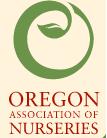 By Daily Digger
By Daily Digger
Oregon Association of Nurseries
Oregon gets a B- in invasive species management
Oregon, as a whole, could be doing better in its fight against invasive species. That’s the verdict from the Oregon Invasive Species Council (OISC), which gave the state a B-minus on its annual Invasive Species Report Card (PDF).
That’s down a full letter grade from 2012, when the state received an A-minus. The main difference? Cuts in state funding, and downtime as the council made the transition to a new coordinator. The coordinator serves on a contract basis, and the contract expired in 2013. A new coordinator, Carolyn Devine, has been brought on board. The report card also talks about other factors in the lower grade, including the need for more outreach to build public awareness of invasive species and the dangers they pose.
“There are many individuals and groups who are working together to prevent new introductions of damaging, non-native species and to manage invasive species that are already here. This report card describes how we are doing collectively and provides suggestions for what we can do better in 2014,” council chairman Mark Sytsma said. “Unfortunately, our overall grade is down a bit from last year. We hope that with the rebound of the economy that the state can reinvest in the fight against invasive species.”
The 15-member council is comprised of representatives from government agencies, nonprofit organizations, industry, academia, and other stakeholder groups. The council’s mission is to prevent the introduction and spread of invasive species in Oregon, which include harmful and non-native plants, animals and pathogens.
Several invasive insects, pathogens and plants are of great concern to the nursery industry due to their potential to cause economic and environmental damage. These include the emerald ash borer, the spotted wing drosophila, the Asian longhorned beetle, and many others.
Disclaimer: Articles featured on Oregon Report are the creation, responsibility and opinion of the authoring individual or organization which is featured at the top of every article.

